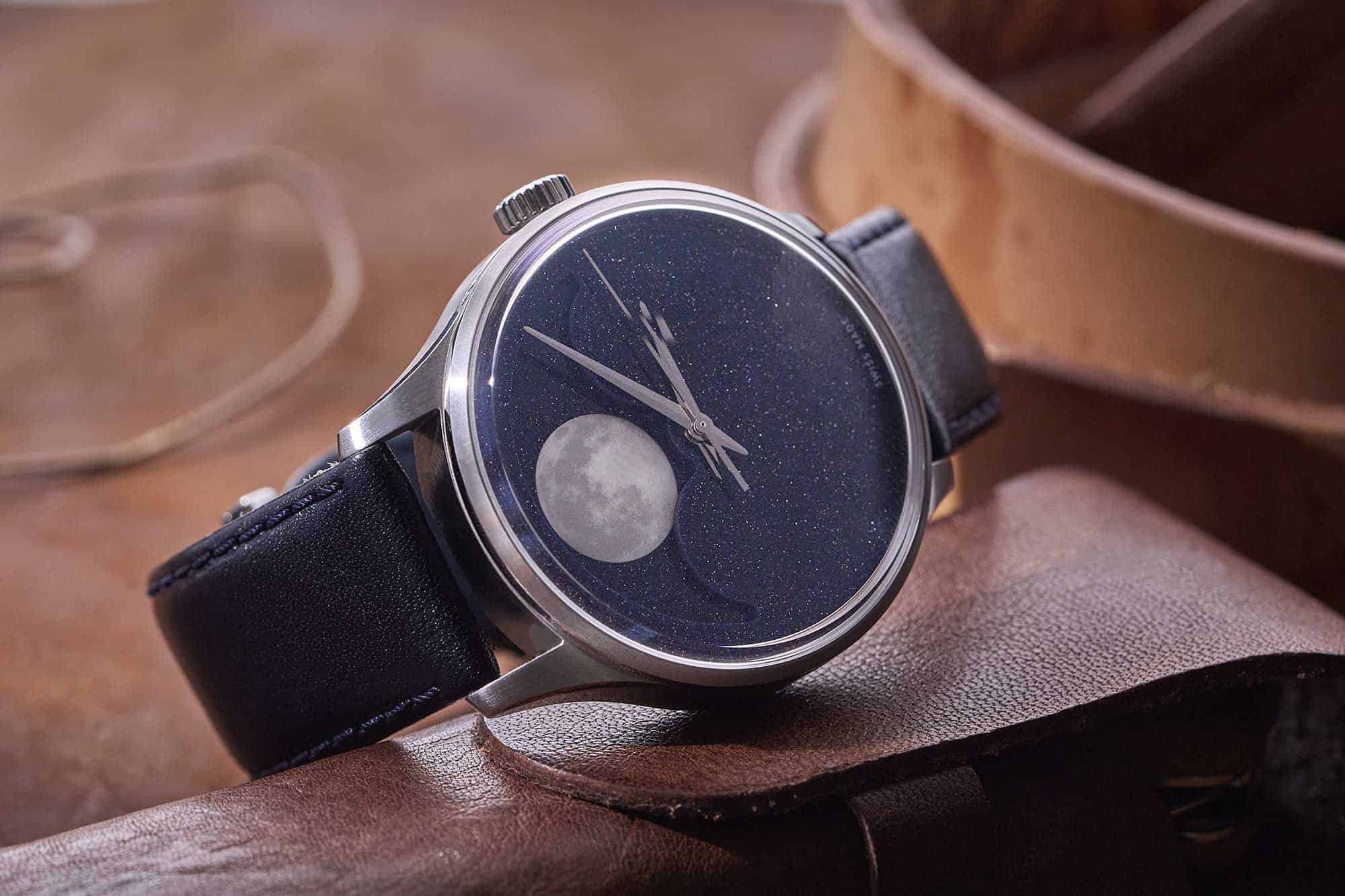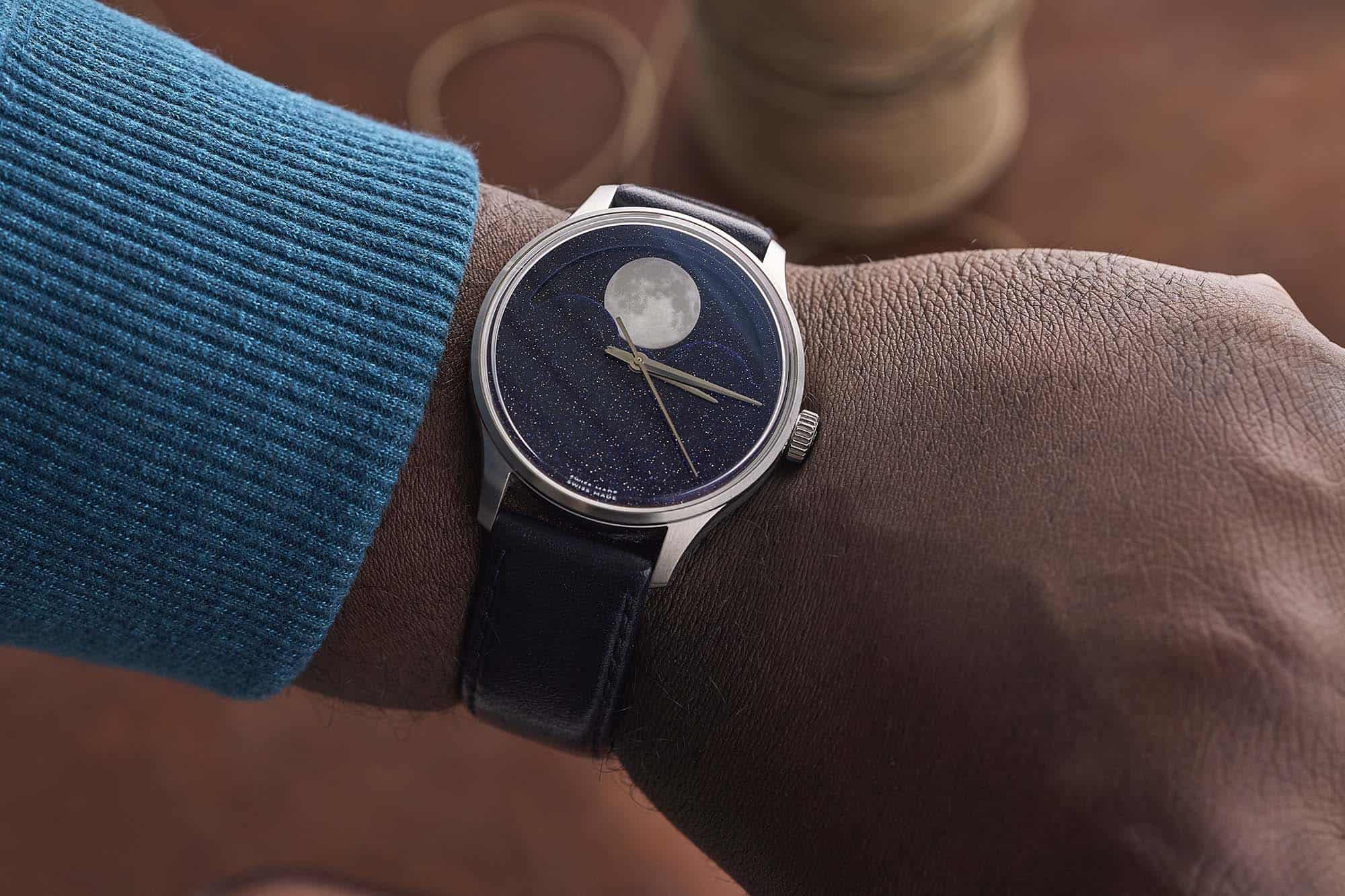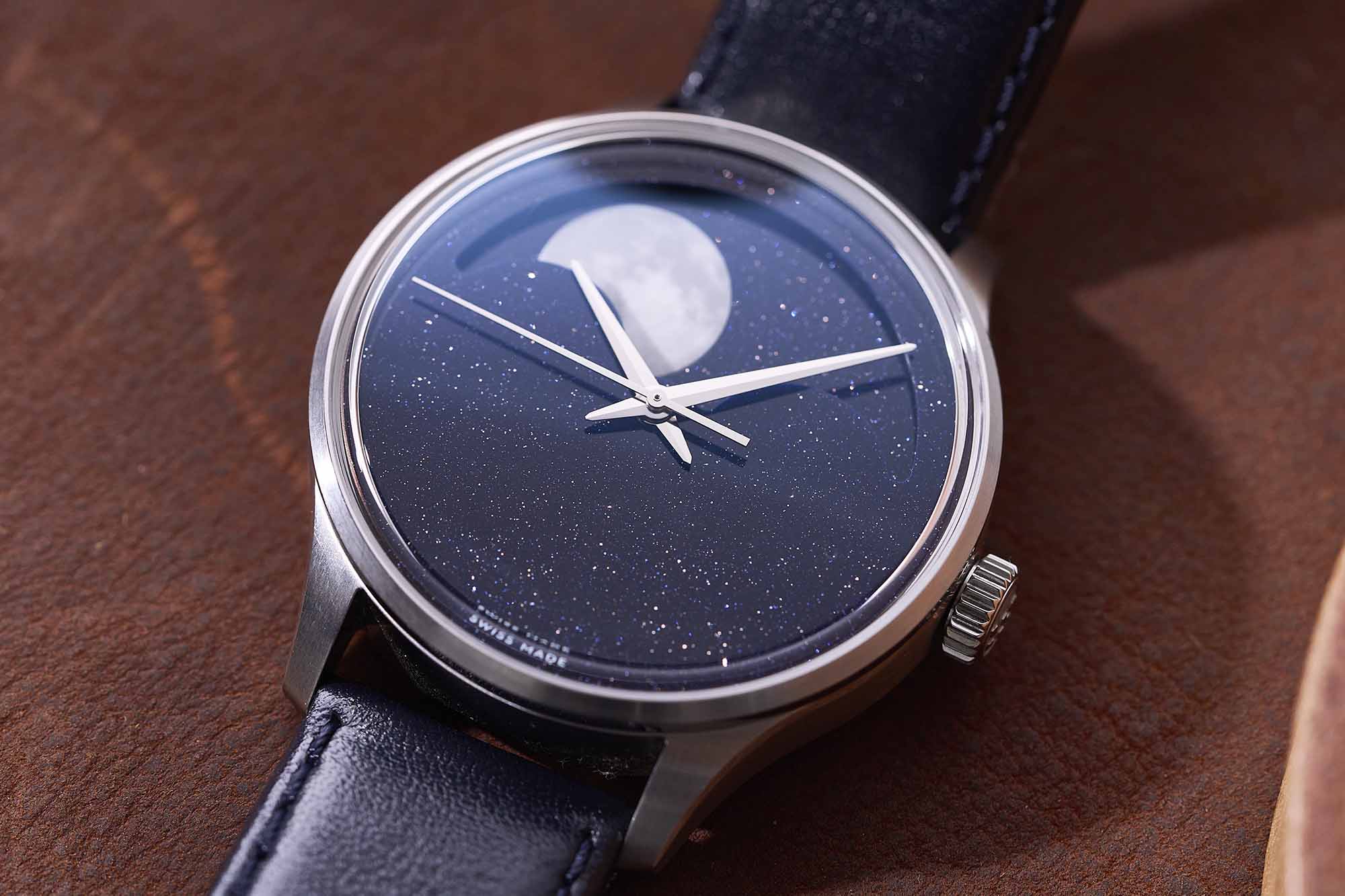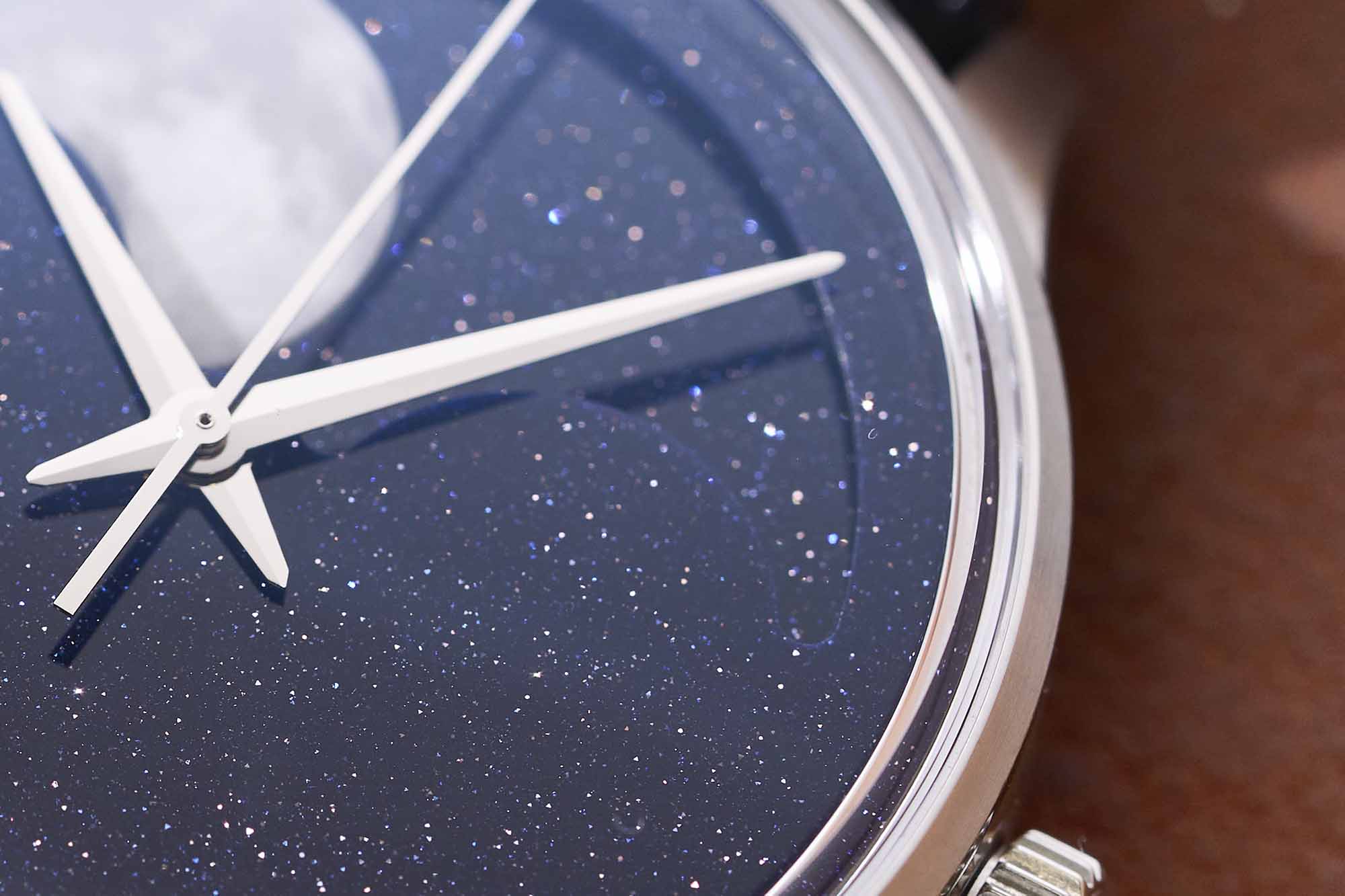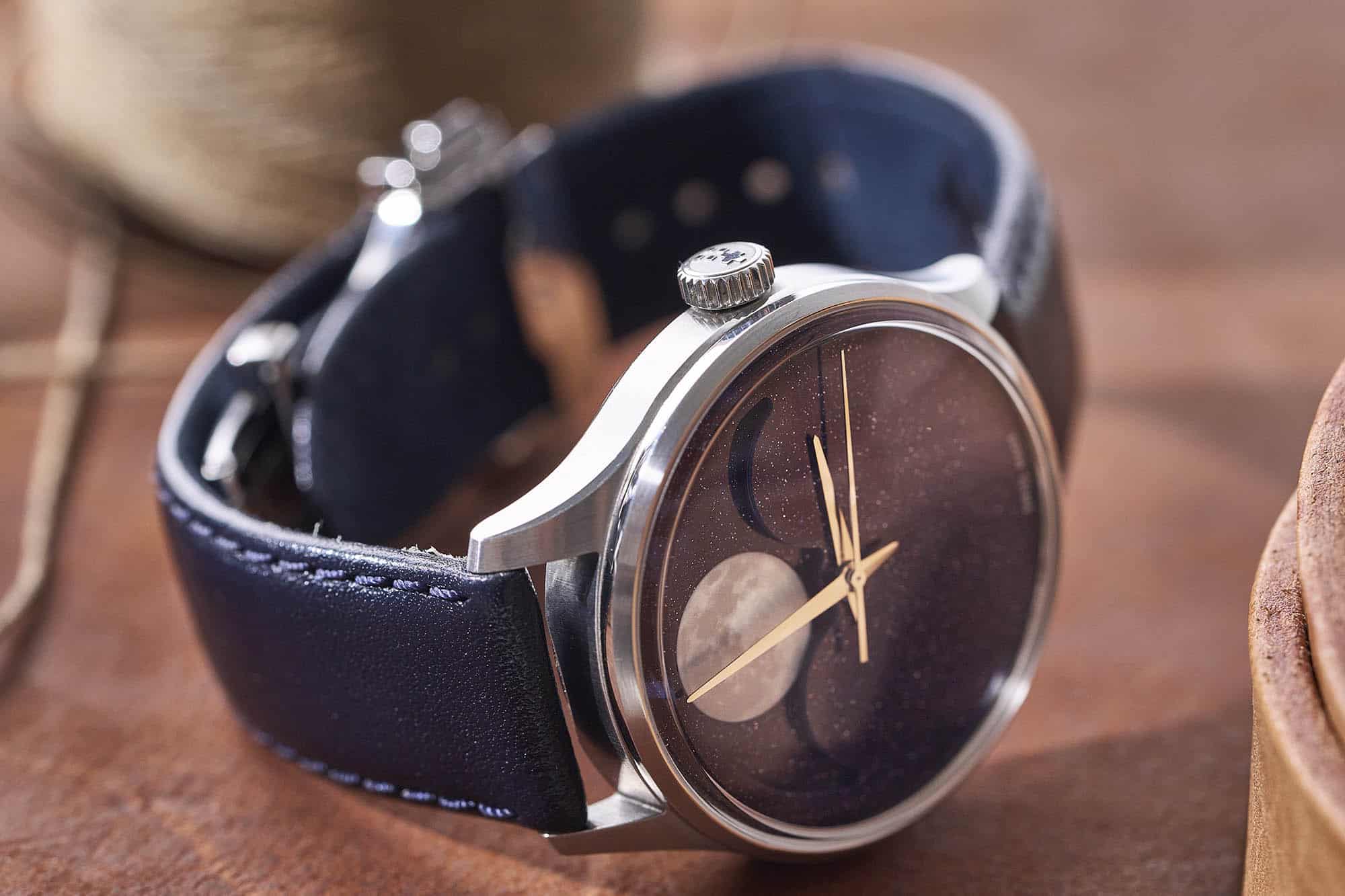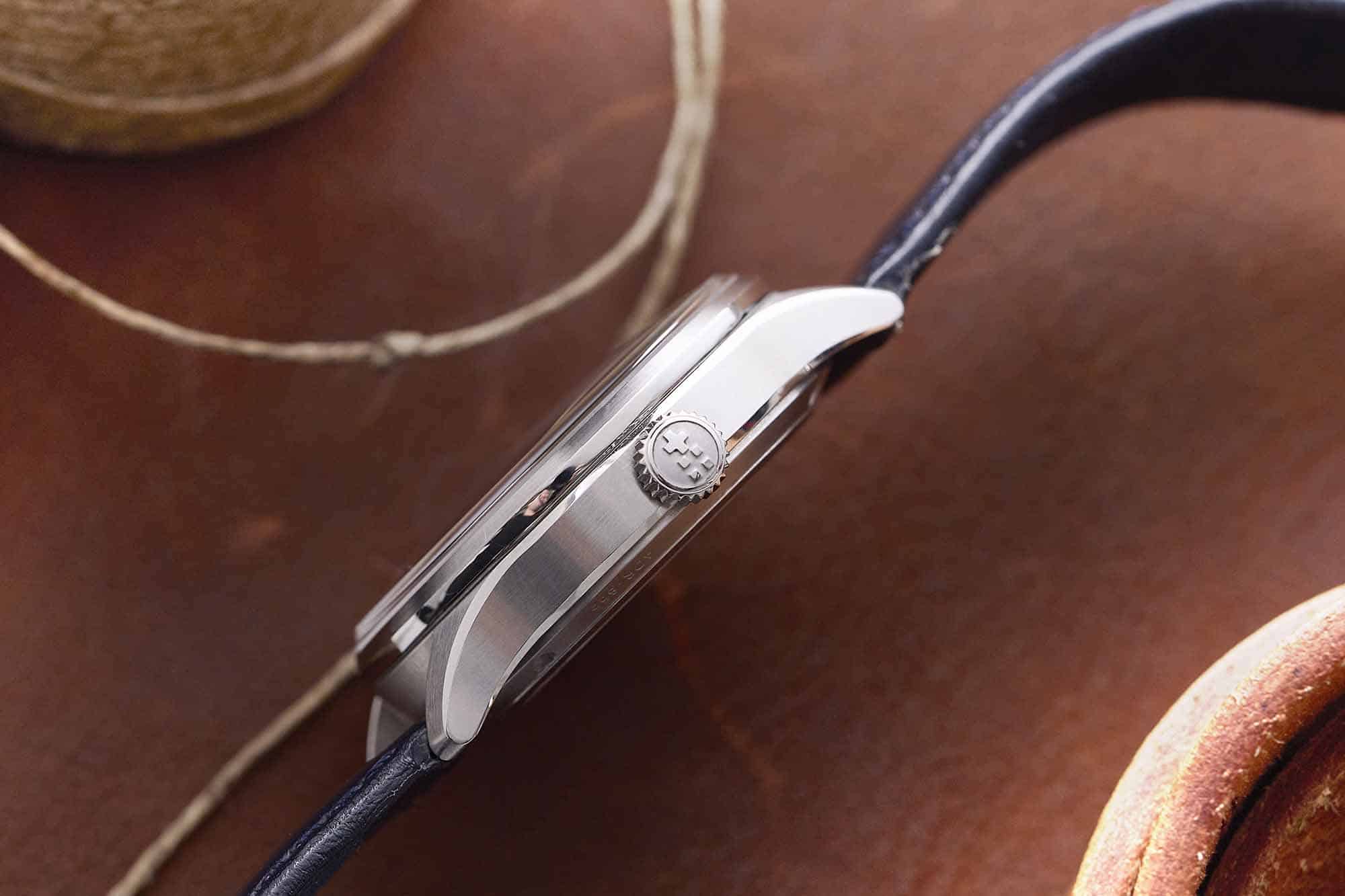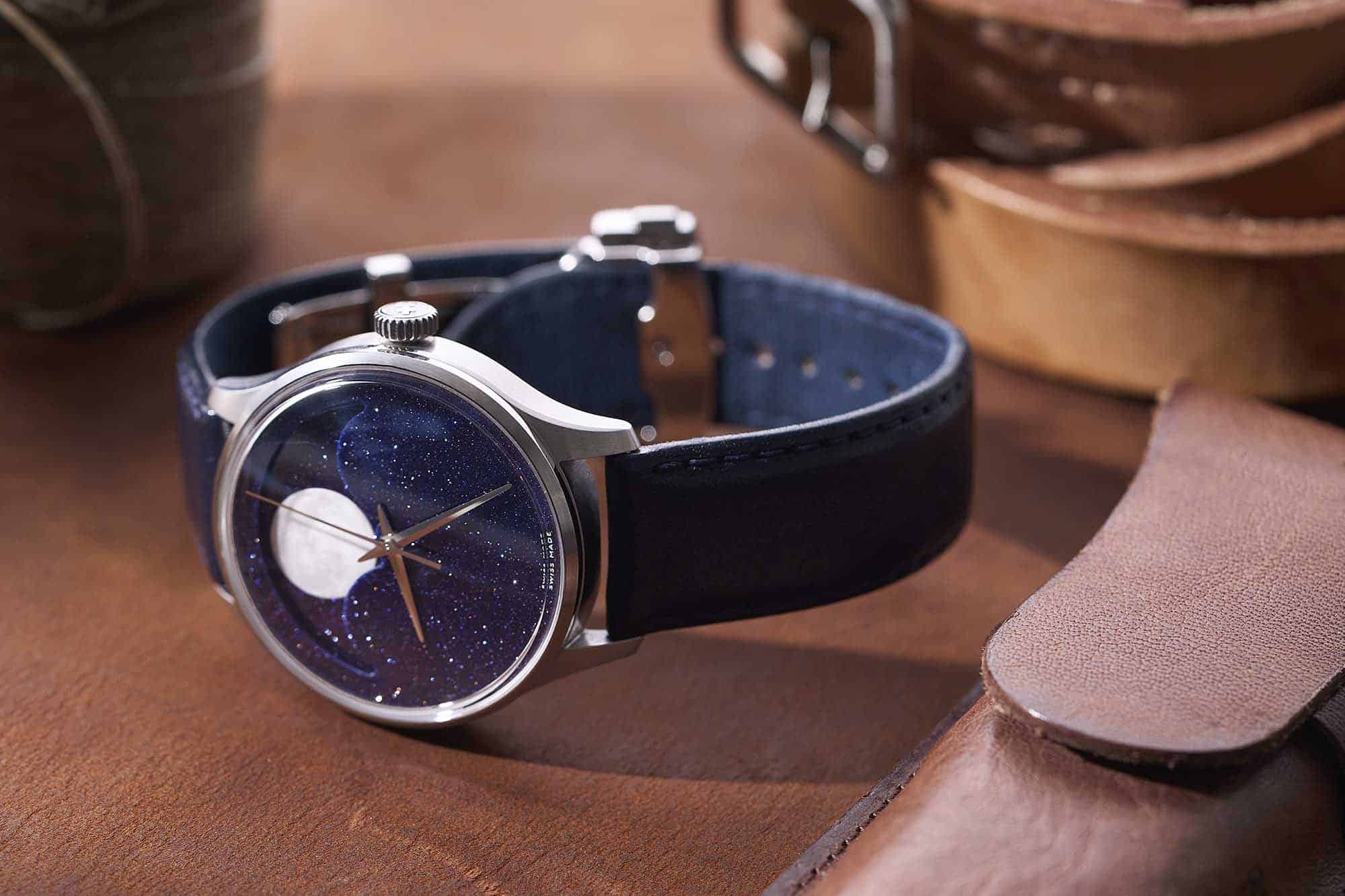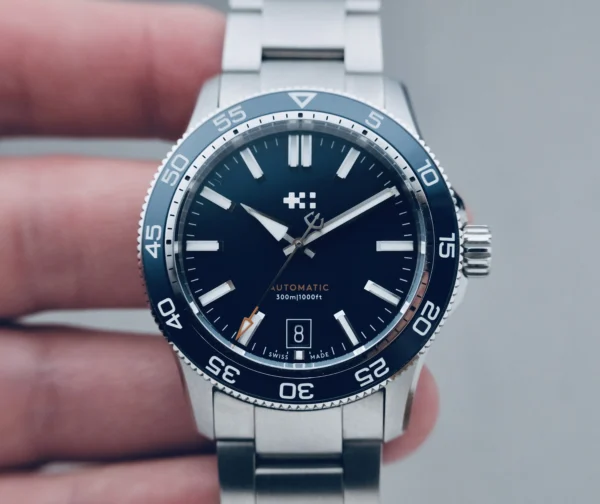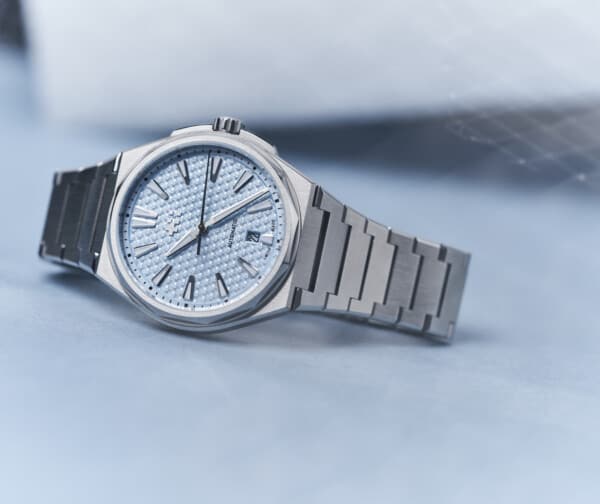And the moon, on the C1 Moonphase, is huge. The brand clocks it as being 25% larger than the moon display in the C1 Moonglow, which used the same movement. The moon itself (there actually two of them, one always hidden, spinning around the dial simultaneously) is made from Globolight, a compound made from a mix of ceramic and SuperLuminova. It glows white in the dark, and is quite bright when hit with a UV torch. Christopher Ward overlays the moon disc with a four-color print of the real moon, part of a trend in recent releases from many brands in presenting “accurate” representations of the moon in their watches (they are not always moonphase complications).
A brief tangent here: I don’t know that I like these hyper-accurate representations of the moon on a watch dial. It works on the C1 Moonphase, to be sure, but I hope we are not in the midst of a race to create the most photorealistic representation of the lunar surface on a watch dial. It kind of takes the charm and romance out of a complication that, at least in 2024, is built completely on charm and romance. Give me a human style face any day of the week. Let’s see brands flex their creative muscles here. I’d love to see how Christopher Ward’s “moon face” differs from, I dunno, Longines, or De Rijke & Co. Someday, when there are enough unique moon faces out there, I look forward to writing the definitive guide.
Back to the C1, the other aspect of the dial worth discussing is the complete lack of markers or indices to precisely read the time at a glance. We just published a video on the topic, and I’ll refer you to our YouTube channel for a more thorough discourse on the pros and cons of a markerless dial, but I’ll say here that I love that Christopher Ward went for it, resisting what must have been a substantial urge to give us some means of reading the time minute to minute. Leaving the large span of aventurine unspoiled feels like the correct decision for this watch. It’s not for everyone (and Christopher Ward makes a similar watch without a moonphase for collectors who like aventurine but need traditional markers) but I think the people who are drawn to a watch like this are going to really love it.
![]()
The dial of the C1 Moonphase is special by any definition, and has been designed with aesthetic appeal placed above practicality. The case, in some ways, can be seen as the inverse. While I wouldn’t say it lets the dial down, it’s somewhat nondescript, acting purely as a vessel for the aventurine and the moonphase execution it carries. It measures 40.5mm in diameter and is about 13mm tall, and 48mm lug to lug. It’s quite literally “all dial” so it wears every bit of that 40.5mm, perhaps even a bit more.
When it comes to a watch that has a true showstopper dial, I don’t mind when it wears large. The way I see it, a watch like this is not an everyday piece, so there’s no real need for it to overperform on the comfort scale. It’s not uncomfortable by any means, but it wears a little more like a sports watch than I think you’d typically want for a watch in this category. Still, it’s tough to complain. The case here has one job, and that’s to serve as a venue for the aventurine. And like all recent Christopher Ward watches, the finishing is very nice, with a finely brushed midcase, and polished bevels running down the lugs and around the bezel. It’s not the most complex design in the Christopher Ward catalog, but it’s undeniably nice looking even if it doesn’t have the wow factor of the dial.
![]()
Something I will complain about (just a little bit) is the deployant clasp. This reference can be ordered from Christopher Ward on either their new five-link Consort bracelet, or the blue leather strap seen here, which by default is paired with a stainless steel foldover deployant clasp. For the life of me, I don’t think I’ll ever quite understand why brands use deployants on watches at this price point. A simple tang buckle will almost always be more comfortable, and unless a brand springs for a very nice deployant you end up with a piece of hardware that is bound to let you down. With this particular deployant, I found the closing mechanism to be somewhat vague, in that there were times I thought it was fully snapped shut, but it actually was not, and could have flown open at any time with just a hint of pressure. To securely fasten it requires the wearer to really put some elbow grease, as it were, into the connection. It’s certainly possible that the clasp just needs a break-in period, but you know what never needs a break-in period, and works as it should every time, and is also less expensive, more elegant, and more comfortable? The simple tang buckle forever has the belt, I’m afraid.
![]()
The strap and its buckle, though, are literally the easiest things to correct on a watch, and should not hold anyone back from pursuing the C1 Moonphase if the design of the dial speaks to them. For me, this is the most interesting and successful Christopher Ward watch that has been launched in the last few years, including the Bel Canto and the Twelve, both of which I like quite a bit. The C1 Moonphase edges those watches out for me as it quite simply has a dial that I find a lot more endearing. If the Bel Canto is Christopher Ward proving they can approach haute horlogerie mechanics on a budget, and the Twelve is proving they can craft an effective affordable facsimile of a classic integrated bracelet sports watch, the C1 Moonphase is an exercise in making something that is beautiful above all else. All three of those pursuits are completely worthwhile, and Christsopher Ward should be celebrated for excelling at each, but the latter, in my estimation, is the hardest to pull off, and is most closely aligned with my own interests at the moment. Christopher Ward









 Featured Videos
Featured Videos




